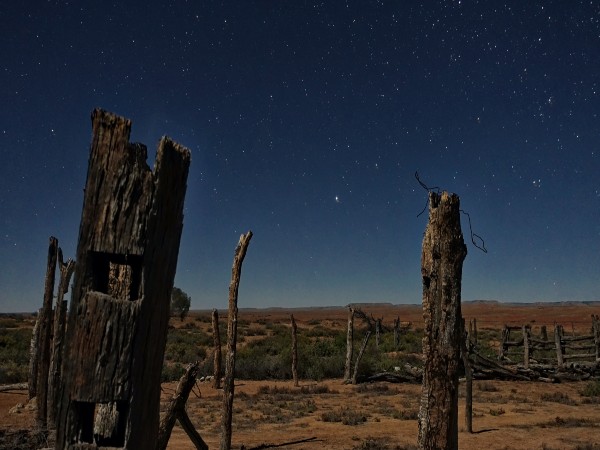Ridge upon ridge of deep red sand stretches from horizon to horizon across the Simpson Desert in the dry heart of Australia. In 1845, Charles Sturt, the first European to set eyes on the scene, described how the ridges ran in parallel lines and 'succeeded each other like the waves of the sea'. Sunrise and sunset emphasise the symmetry of the dunes, for the slanting light picks out the red crests like undulating banks of burning coals, and their hollows seem like deep pools of ink.
Covering an area almost half the size of Italy, the Simpson Desert is Australia's most hostile region. Between the dunes, which reach up to 65ft (20m) high, lie clay pans and gibber plains - flats of jagged stones. The desert is the driest place on the continent, with an average of just 5in (125mm) of rain a year, and for months on end only gnarled shrubs and cane grass can eke out an existence in the baked earth.


Lizards and hopping mice survive here, keeping to burrows in the heat of the day. Occasional heavy rains bring a magical transformation. Almost overnight, a carpet of living green emerges from the desert floor. Soon, bright sweeps of purple appear where succulent parakeelya plants burst into bloom, attracting insects and birds.
Charles Sturt, a government surveyor, was eager to explore the area. The migratory pattern of birds led him to believe there must be an unmapped expanse of water in the interior. It was this that he set off to find when he left Adelaide in August 1844. But a year later his party turned back defeated. After crossing an 'immense, gloomy, stone-clad plain' (now known as Sturt's Stony Desert), they were faced with thirst and starvation as they reached the eastern edge of the forbidding Simpson Desert. The scorching heat - 70C (160F) - of a record-breaking summer, and scurvy brought on by a diet of flour and water, had sapped their strength.
Desert explorer Dr Cecil Madigan led a scientific expedition into the desert in 1939, using camels for transport. He named the desert after Alfred Simpson, president of the South Australian Branch of the Royal Geographical Society.
Still Untamed

Particles of iron oxide give the sand its red colour, but around a few glasses of water - courses it is white. The dunes were piled up by powerful winds in prehistoric times, and today are much as they were some 14,000 years ago, after the winds had dropped and rainfall had increased enough to allow shrubs and grasses to bind the sand with their roots. Travellers today can drive across the desert, but must still face sandstorms, stones, mud and searing heat!



 Click it and Unblock the Notifications
Click it and Unblock the Notifications






















